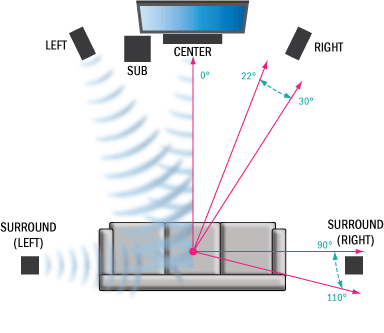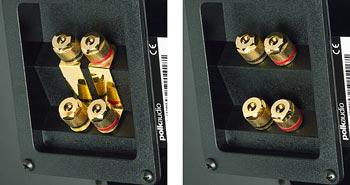Speaker connections
Before you connect your speakers, you'll need to determine where you'd like to place them. This will help you find good routes for your speaker wire, and ensure that you've got enough wire to connect all your speakers. Keep in mind, where you position your speakers will impact sound quality a great deal. See our speaker placement video and Julie's home theater speaker placement article for more info on this important subject.

5.1 speaker placement
Take a little extra time to set up your speakers properly, and your ears will thank you.
Choosing speaker wire
The type of speaker wire you use can also make a difference. The right thickness, or gauge, of wire and the type of connectors attached to the ends will help ensure optimum sound quality and easier connections. If you have to use long runs of wire, choosing a heavier gauge will allow more power to reach your speakers for better sound. You may also want to consider using speaker wire terminated with banana plugs or pin connectors for simpler hookups. See our article on speaker wire and connections for more info.
Bi-amping your speakers

Bi-amping speakers
Jumpers connect the two sets of binding posts for regular use (left). For biamping, remove the jumpers (right).
If you've got a seven-channel receiver but you're only using five speakers and a powered subwoofer, you might be able to put those extra two channels to work. Most newer seven-channel receivers let you redirect their rear surround amp channels to send the power to a pair of bi-amp compatible front speakers (these are speakers that have two sets of binding post inputs instead of the usual single pair). You'll enjoy more dynamic, higher quality sound from your bi-amped front speakers — a great feature for anyone who listens to a lot of stereo music.